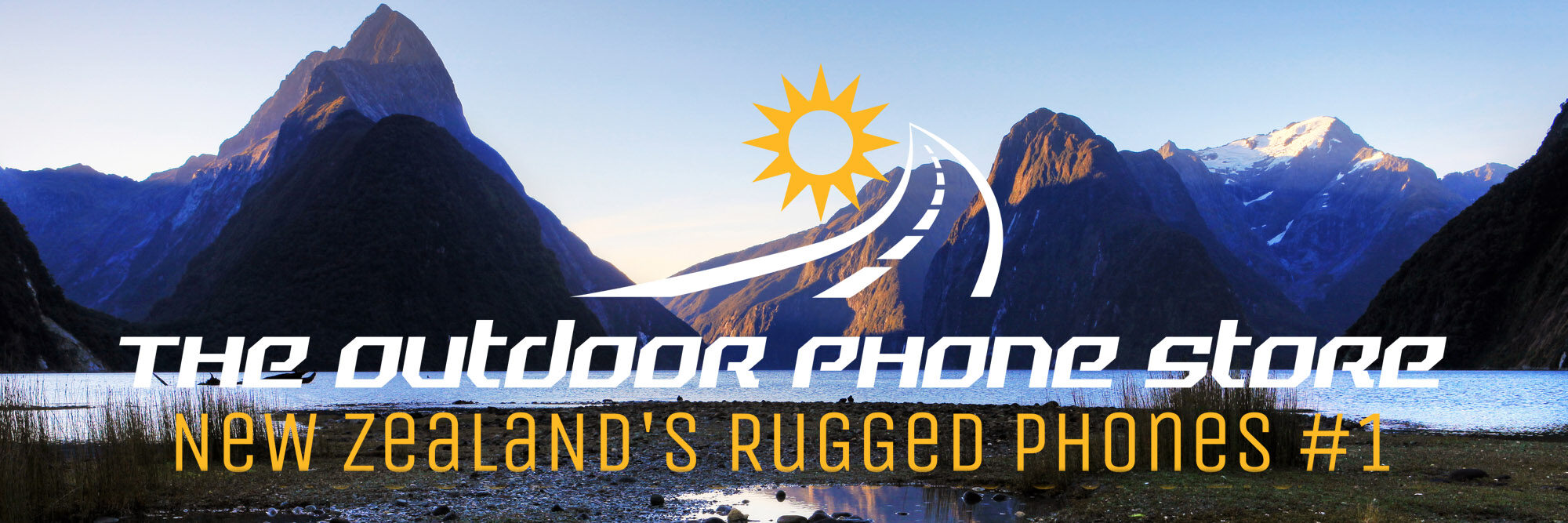 SUBCONTINENTAL DRIFT
SUBCONTINENTAL DRIFT
After a whirlwind trip through India’s sights, smells and sounds, Robert Cross vows to return
AIPUR, India – ‘I was told that the first thing you’ll notice is the smell,’ said my friend Dave with a faint leer. Just a friendly word of warning to get me going on the wrong foot.
My wife, Juju, and I had been hearing a lot of secondhand and even firsthand tidbits like Dave’s almost every time we told anyone about our travel plans. Visiting India? Get ready for a shock: Pollution. Dirt. Poverty. Stifling heat. Noise. Weird behaviour. Those odors.
I’m here to testify that any negatives were far outweighed by the beauty, culture, architectural grandeur and spirituality we were privileged to sample during a brief visit to a few cities in the north.
After we cleared the jetway in New Delhi at 5:30 a.m. on an autumn Saturday, the only smell came from the universal airport brew of electric-light ozone, air conditioning and passenger scents no different from those at Sydney or Heathrow.
Instead, the first thing we noticed was the wallpaper on immigration officers’ cubicles, a darling blue-and-pink-flowered pattern of the sort that might decorate a little girl’s nursery.
The officers’ faces remained properly stern, of course, and they worked deliberately. We heard a constant thumping of rubber stamps and piped-in native music that sounded like the whining of a thousand mosquitoes, and after about 45 minutes, a man in uniform summoned Juju and me to his posy-splashed quarters, examined our documents and pounded on them with his stamps.
Still no smell when we finally carted our luggage to the parking lot. Obviously, Dave had been misinformed.
Our driver, Remish, helped with the bags, and we set off on the five-hour drive to Jaipur and the beginning of our seven-day India adventure. Dawn greeted New Delhi with a gray haze of pollution, and my chest felt heavy. Our little white van seemed to be the only passenger vehicle on a highway filled with trucks and bicycles. Huge cows, some gray, others black, lolled on the median strip.
Those trucks provided some color in the otherwise drab outskirts of the big city. Each one had been professionally painted with garlands of flowers, soaring birds, cartoonish tigers, lovable bovines and complex geometric patterns. Some bore neatly scripted slogans on their sides, like ‘I Love My India’ or ‘The Great Indian Spirit’. On the rear end of each lorry, the artists had painted a fervent plea: ‘PLEASE HONK YOUR HORN’. Remish hit the horn incessantly, sticking to the right-hand lane and passing the endless parade of freighters – India is a left-hand-drive country – while deftly avoiding wayward bikes and meandering cows.
Two hours later, as we drove into the state of Rajasthan, the roadside scene abruptly changed. Our divided highway became a two-laner, adding to our excitement the real possibility of head-on collisions.
In downtown Jaipur, Juju and I felt as if we had been dropped into the middle of a Bollywood epic. Film buffs use the term to describe Bombay’s prolific movie industry, and here we had subcontinental action in three dimensions. We entered Jaipur during rush hour, so some of the streets leading to our hotel had been temporarily declared one-way in the wrong direction, apparently an effort – largely futile – to prevent gridlock. While Remish circled the city at a crawl, trying to find a route, we suddenly were interacting with the people. A few tapped on the windows to beg for money or sell us things. But most were in cars or riding mopeds – intent on honking their way through thickets of traffic, but still taking a moment to smile and wave at Juju’s video camera.
 We found ourselves in the middle of an enchanting old city, alive with markets and the brilliant colors of the dresses and turbans worn by residents going about their business. Pedestrians skittered between vehicles, which slowed down only when a cow or two decided to lounge in the middle of the street.
We found ourselves in the middle of an enchanting old city, alive with markets and the brilliant colors of the dresses and turbans worn by residents going about their business. Pedestrians skittered between vehicles, which slowed down only when a cow or two decided to lounge in the middle of the street.
Remish at last found the hotel entrance, a discrete opening in a wall and a long driveway leading to the magnificent, cream-colored Jai Mahal Palace. The 250-year-old building had once served as a palace for one of Jaipur’s many royals. Rajasthan has had a bewildering lineup of rulers and high-ranking court figures through its long history, and we soon lost track of the lineage, despite the best efforts of our local guides. But the maharajas sure had good taste in housing.
We felt entitled to a few hours of leisure. The lawns, pools and statuary of the Jai Mahal Palace invited meditation and brought a welcome element of tranquility to soften the jet lag. A pantalooned and turbaned house musician entertained two children with an old stringed instrument while they frolicked on the grass near a pavilion where we and a few other guests ate lunch. Juju and I still felt dragged down by travel overload. A visitor to India should schedule a day of retreat every so often to avoid becoming overwhelmed by exotica and to think about the meaning of it all. Our tight schedule denied us that luxury.
The next morning, our guide, who introduced himself as G.S. Arora, joined us and Remish in the van for a tour of Jaipur. His eyes sparkled mischievously behind his glasses. We would have other guides in the days ahead – a scholarly gentleman in Agra and at the Taj Mahal; a religion expert amid the Hindu temple carvings (some quite erotic) in Khajuraho; the harried scout who showed us the sights in Delhi.
Even so, Arora was the first, and this is a story about first impressions, so the task of satisfying our basic curiosity about the Indian way of doing things fell to him.
We headed for the heart of Old Jaipur, the walled and picturesque enclave known as the Pink City. Arora explained that in 1876 the reigning maharaja, Ram Singh, ordered all buildings near the palace painted pink to celebrate a state visit from the Prince of Wales, who later would ascend to the English throne as King Edward VII. ‘Pink is the color of warmth and welcome,’ Arora informed us, and pink the old city has remained. The buildings within the wall are repainted every couple of years. ‘People can use different shades of pink, but the basic color has to be pink,’ Arora said. ‘The authorities take care of the painting.’
We paused at Hawa Mahal, the Palace of the Winds, for what Arora termed ‘a Japanese stop.’ He said that meant a stop for photographs. Although Juju is Asian, she laughed at the stereotype, one that I thought the world and its technology had obliterated. For a second, the guide’s little joke made India seem even more deliciously anachronistic.
The Palace of the Winds was pink, naturally, a beautiful 204-year-old facade about 5 stories high and dotted with tiny windows. From rooms and balconies on the other side, ladies of the court at the adjoining City Palace could discreetly peek down at the street scene.
On Tripolia Bazaar and other streets of the Pink City, merchants with open-air shops were selling everything imaginable. Although we felt the urge to get out and look at the displays of produce, spices, clothing, tools, toys and all the rest, we had a schedule to meet.
Arora did pause long enough to point out a milk market, where farmers had lined up canisters containing the morning’s output from their goats, cows, sheep and buffaloes.
The guide called our attention to a potential customer dipping his hand into a can. ‘To make the milk more profitable, a lot of water is added to this milk’, Arora said. ‘When the buyer comes in, he will put his hand in the milk, shake it out, rub the milk on his fingertips and see how much fat is in it. So the more hands that go into this can of milk, the better the milk becomes because of this added flavor. Thankfully, this is not the milk supplied to your hotel.’
That led to the subject of cows. ‘Every morning people would milk their cows and then leave them in the street to be fed by people,’ he told us. ‘The cow being a sacred animal, every household would try to feed them. After eating, they stand in the middle of the road or sit in the middle of the road and chew cud. This is good, because it slows and controls the traffic. And the cows like it, because the fumes make them feel high. In India, every animal except the husband is sacred.’
‘How do the cows know how to get home?’ Juju asked.
‘They always know. They are like homing pigeons.’
 At the Amber Palace, our next stop, we found it easy to avoid eye contact with the hawkers because the palace itself commanded our full attention. The pinkish-beige structure sprawls across the crest of an imposing, rocky hill about 7 miles north of Jaipur. Begun in 1592 and completed in 1639, it served for more than 100 years as the capital of Rajasthan. In 1727, the reigning maharaja, Jai Singh, moved the capital to Jaipur, but the royal family continues to take up residence in the Amber Palace from time to time, even though the government now owns it.
At the Amber Palace, our next stop, we found it easy to avoid eye contact with the hawkers because the palace itself commanded our full attention. The pinkish-beige structure sprawls across the crest of an imposing, rocky hill about 7 miles north of Jaipur. Begun in 1592 and completed in 1639, it served for more than 100 years as the capital of Rajasthan. In 1727, the reigning maharaja, Jai Singh, moved the capital to Jaipur, but the royal family continues to take up residence in the Amber Palace from time to time, even though the government now owns it.
We decided to ride an elephant up the hill to the palace entrance, a popular if somewhat hokey way to get there. Jeeps were also available, and visitors can hike up the steep ramp if they wish. Juju and I climbed onto a little seat behind our elephant driver. It swayed and tilted, while the driver engaged in a long, loud argument with his supervisor. Evidently, the driver wanted two more passengers for his mount, because the seat can hold four. Juju said, ‘I don’t like this at all. It’s scary. I want to get off.’ But before we could figure out how to do that, the elephant started up the ramp.
Arora, not being a tourist, preferred the Jeep. He met us in the palace courtyard, which was crowded with visitors and the elephants they came in on. He showed us around the wonderfully carved and pearl-inlaid areas where rulers held their audiences. We peeked into the artistically decorated private chambers that housed the maharajas and their concubines. A sandstone garrison stood grimly at a higher level, and both buildings spread their ramparts far along the mountainside like a truncated version of China’s Great Wall. Such a display of power and wealth must have intimidated enemies and subjects alike.
In the days that followed, we moved on to Agra and India’s absolute must-see, the Taj Mahal. After taking in the sights of Agra, we flew to Khajuraho, a relatively tranquil village famous for its beautiful Hindu temples dating back to the Chandela dynasty, which ruled for 500 years until overrun by the Moguls early in the 16th Century. The structures were a pleasant contrast to the palaces, tombs, fortifications and congestion of Rajasthan and Agra. We beheld an array of temple towers surrounded by lawns laced with uncrowded pathways.
Our guide that afternoon introduced himself as Mr. Singh. Immediately, he began to explain at great length the Hindu religion and how the carvings on those temples – built within a 100-year period, starting in AD 950 – illustrated the complexities of Hinduism and honored its divinities in all of their forms. He said the towers had been constructed in this out-of-the-way place to protect the sandstone images from frequent rains and floods that hit the Chandela capitals.
The masterful carvings encircled the towers in rows all the way to the top. They depicted gods and goddesses, of course, but also aspects of everyday life. Animals hauled farm goods, musicians played, soldiers fought, hunters stalked, and beautiful, exaggeratedly proportioned female dancers swayed. Animals both real and figments of artisans’ imaginations cavorted – leopards, elephants, horses, boars and combinations thereof.
Most famously, human couples were shown locked in carnal embrace, striking many of the positions detailed in the Kama Sutra.
‘You know about yoga?’ Mr. Singh asked. ‘There are a hundred kinds of yoga These are the way to reach the ultimate goal of life that is the next incarnation. These poses are a part of it, specific positions. Even sex could be a part of yoga.’
We were still pondering the complexities of the Hindu religion that night, as we dined at the rooftop Blue Sky Restaurant. Below us, merchants sold souvenirs, fabrics, saris, books and miniature copies of temple carvings. Across the street, the actual temples glowed with golden light and a voice boomed in Hindi – a sound and light show. We filled up on helpings of a dish very much like fried rice but punctuated with masala, a mixture of spices that provided a delicious mosaic of flavors.
Up there on the Blue Sky, we met a young couple from France who had been traveling through India for several weeks. They described wonders we would miss, experiences we wouldn’t have. At least not now. They were merchants, buying materials for their shop in Brittany. ‘We did make a short visit one time’, the man said, ‘and it was very difficult and frustrating. Doing it this way can still be difficult and sometimes frustrating, but there is so much to see.’
Intrepid INDIA
Classic Rajasthan
15 days, ex Delhi
Trip Style: Intrepid Original
Highlights: Delhi, Taj Mahal, Ranthambhore National Park, Pushkar camel safari, Keoladeo Bird Park, Jaipur, castles
Brief: Rajasthan is home to all the colours of India. On our classic Rajasthan adventure we discover hidden forts, majestic palaces, colourful bazaars and of course enjoy a camel safari. This is the essence of Rajasthan.
Departure: Departs every Sunday from September to April and selected dates in July and August.
Price: AU$1020, plus Local Payment of US$200 per
person
Unforgettable India
15 days, ex Delhi
Trip Style: Intrepid Original
Highlights: Delhi, Khajuraho’s erotic temples, the River Ganges, Orchha, Chitrakoot, markets, Varanasi, Taj Mahal
Brief: India is vibrant, intoxicating, inspiring, dramatic and above all, unforgettable. From the Mughal splendour of Delhi and Agra, to the reminders of the Hindu epics in Chitrakoot and memories of prehistoric man in Chanderi, this trip offers it all. Join pilgrims as they undertake their daily rituals on the banks of the Great Mother Ganges.
Departure: Departs every Saturday from September
to April.
Price: AU$920, plus Local Payment of US$200 per person
India Unplugged
22 days Delhi to Kolkata
Trip Style: Intrepid Basix
Highlights: Delhi, Taj Mahal, desert scenery, towns lost in time, palaces, Kolkata
Brief: Chaotic and inspiring, this is the real India. India Unplugged is a far-flung adventure to one of the planet’s most exotic destinations. See towering fortresses and holy rivers, cosy up with camels, try your hand bargaining in bazaars and still have time to check out the Taj Mahal.
Departure: Departs on a Sunday.
Price: AU$1080, plus Local Payment of US$150 per person
India Family Adventure
15 days, ex Delhi
Trip Style: Intrepid Family
Highlights: Delhi, Taj Mahal, Ranthambhore National Park, Bundi, Pushkar, camel safari, Jaipur
Brief: Come and meet India’s people and let them show you their homeland. This itinerary is designed for adults and children alike. Explore some of India’s most famous sights and experience an overnight camel trip into the desert, seek wildlife at Ranthambhore and learn local crafts around Jaipur.
Departure: Departs on a Saturday.
Price: AU$1270, plus Local Payment of US$200 per person
For more information on traveling in India with Intrepid Travel, please visit www.intrepidtravel.com, free call 1300 360 887 or come and see us at 360 Bourke Street, Melbourne.
KNOW BEFORE YOU GO
Best time of year to travel? India’s climate varies enormously from region to region and from season to season. While southern India basks in a reasonably constant tropical climate, the temperatures in the Rajasthan desert can vary from 50 degrees Celsius in July to 0 degrees Celsius at night in January. Monsoons bring torrential rain to most areas between June and August.
Religion: 81% Hindu, 12% Muslim, 2% Christian, 2% Sikh, 3% other
Language: Hindi (official) plus 12 other official languages and over 1600 dialects
Currency: Rupee (INR)
Visas: India does not offer visas on arrival – they must be applied for prior to travel. Conditions vary with country of origin and they usually take 1-2 weeks to process. In Australia, most travellers will apply for a 6 month multiple entry visa.
Electricity: 220-240V, 50 Hz
Times to avoid: Because climate changes so much within India, times to avoid certain areas will vary according to season. In addition, India is a land of festivals – best to check whether there is a festival going on in the area you want to travel to and book well in advance!







